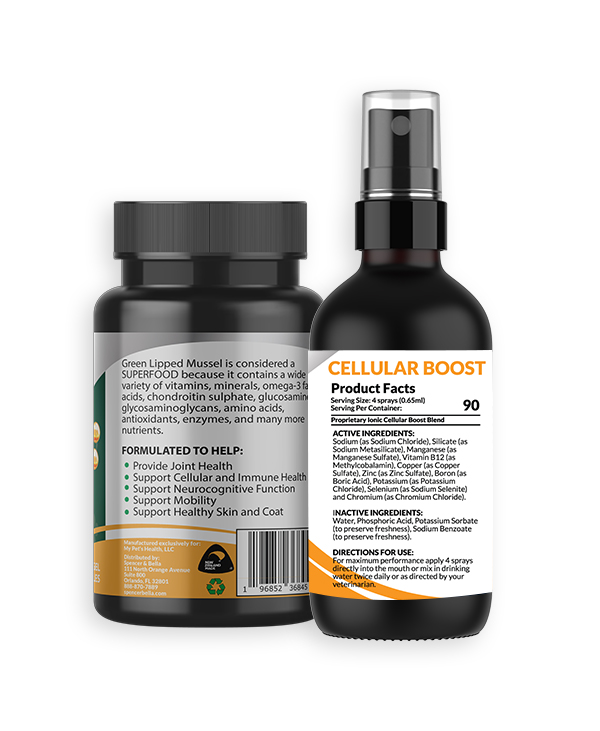As temperatures rise, it is crucial to be vigilant about our pets’ well-being, especially when it comes to heat-related issues. Heat stroke is a severe condition that can quickly endanger the lives of our furry companions. In this informative guide, we will delve into the symptoms of heat stroke in dogs and cats, offer practical at-home treatment methods, shed light on the signs of heat exhaustion, briefly address heat stroke in cats, and provide valuable insights to help you safeguard your four-legged friends during sweltering weather conditions. By being informed and proactive, you can ensure your pets stay cool, comfortable, and protected from the perils of overheating.
Dog Heat Stroke Symptoms
Recognizing the symptoms of heat stroke in dogs is crucial for timely intervention. By being aware of the signs, you can take immediate action to help your furry friend. Here are common symptoms to watch out for:
Excessive Panting and Drooling:
One of the earliest signs of heat stroke is excessive panting and drooling. While panting is a normal cooling mechanism for dogs, if it becomes rapid and is accompanied by heavy drooling, it may indicate a more severe condition. Pay attention to changes in your dog’s panting patterns and the amount of drool they produce.
Increased Body Temperature:
Heat stroke causes a rapid increase in body temperature. A dog’s normal body temperature ranges between 100.5°F and 102.5°F. If their body temperature rises above 105°F, it is a clear indication of heat stroke. You can use a rectal thermometer to measure your dog’s temperature but be cautious and gentle during the process.
Rapid Heart Rate and Breathing:
Heat-stressed dogs often experience an elevated heart rate and rapid, shallow breathing. These physiological changes occur as the body tries to cool down. If you notice your dog’s heart beating rapidly or their breathing becoming unusually fast, it may be a sign of heat stroke.
Weakness and Lethargy:
Dogs suffering from heat stroke may exhibit weakness, lack of energy, and overall lethargy. They may be unable to stand or walk normally and might appear disoriented or unresponsive. If your dog seems unusually tired or has difficulty moving, it is essential to consider heat stroke as a possible cause.
Aslo, read our blog about Wobbly Cat Syndrome.
Vomiting and Diarrhea:
In severe cases of heat stroke, dogs may experience vomiting and diarrhea. These symptoms can further exacerbate their dehydration and electrolyte imbalance. If your dog is vomiting or having diarrhea along with other signs of heat stroke, it is crucial to seek immediate veterinary attention.
Remember, if you suspect your dog is experiencing heat stroke, it is a medical emergency. Prompt action is vital to prevent further complications and ensure their well-being. Stay vigilant and be prepared to provide immediate care to your furry friend.
Cat Heat Stroke Symptoms

Recognizing the symptoms of heat stroke in cats is crucial for timely intervention. Cats are also susceptible to overheating and can experience heat stroke in hot weather. Here are common signs to watch out for:
Excessive Panting and Drooling:
Like dogs, excessive panting and drooling are early signs of heat stroke in cats. Cats may pant or breathe rapidly to cool themselves down. Excessive drooling can also occur as their body temperature rises.
Increased Body Temperature:
Heat stroke causes a rapid increase in body temperature in cats as well. A cat’s normal body temperature ranges between 100.5°F and 102.5°F. If their temperature rises above 105°F, it is a clear indication of heat stroke. Use a rectal thermometer (with caution) to measure your cat’s temperature if you suspect heat stroke.
Restlessness and Agitation:
Cats experiencing heat stroke may display signs of restlessness and agitation. They may pace, meow excessively, or exhibit unusual behavior as they try to cope with the discomfort caused by the high body temperature.
Lethargy and Weakness:
Heat-stressed cats may become lethargic and weak. They may show a lack of interest in their surroundings, become unresponsive, or have difficulty moving. If your cat appears unusually tired or exhibits weakness, it is crucial to consider heat stroke as a cause.
Rapid Heart Rate and Breathing:
An elevated heart rate and rapid breathing are common symptoms of heat stroke in cats. The increased heart rate and rapid, shallow breaths are the body’s attempt to cool down. If you observe these signs in your cat, it is important to take immediate action.
Pale or Red Gums:
In severe cases of heat stroke, a cat’s gums may appear pale or red. This discoloration indicates poor oxygenation and circulation, which can be a sign of a critical condition. Check your cat’s gums regularly for any abnormal color changes.
If you notice any of these symptoms in your cat, it is essential to act quickly. Heat stroke in cats can be life-threatening, and immediate veterinary care is necessary. Move your cat to a cool, shaded area, offer fresh water to drink (but do not force it), and contact a veterinarian for further guidance and treatment. Remember, prevention is key, so ensure your cat has access to cool and shaded areas during hot weather and never leave them in a hot environment unattended.
You might also be interested in our bog about, Choosing the right Omega-3 fatty acids for your pets
Immediate action is crucial when dealing with heat stroke in dogs and cats. While professional veterinary care should always be sought, there are steps you can take at home to provide immediate aid. Here are effective treatment measures for both dogs and cats:
Move the Pet to a Cool Area:
If you suspect your pet is suffering from heat stroke, move them to a shaded or air-conditioned area immediately. The goal is to reduce their exposure to heat and lower their body temperature. Create a comfortable and cool environment to help them recover.
Offer Fresh Water:
Provide your pet with cool, fresh water to drink. It is important to encourage hydration but avoid using ice-cold water, as it can cause shock. Allow your pet to drink at their own pace and do not force them.
Wet Towel/Cooling Pad:
Place a wet towel or cooling pad on your pet’s body, focusing on the head, neck, and armpit areas. This can help dissipate heat and promote cooling. The coolness of the towel or pad can provide relief and aid in reducing their body temperature.
Use a Fan or Air Conditioning:
Turn on fans or air conditioning to enhance air circulation and facilitate the cooling process. Proper ventilation helps regulate your pet’s body temperature. The circulating air can help them cool down more effectively.
Monitor Body Temperature:
Regularly check your pet’s body temperature using a rectal thermometer. Aim to bring it down gradually to a safe range. For dogs, the normal body temperature ranges between 100.5°F and 102.5°F. For cats, the normal body temperature is slightly higher, ranging between 100.5°F and 102.5°F. Contact a veterinarian if their temperature remains elevated or if you have concerns.
Encourage Rest and Relaxation:
Provide a calm and quiet environment for your pet to rest. Limit physical activity and avoid exposing them to further heat sources. Rest and relaxation are crucial for their recovery process.
Hydration is Key:
To prevent dehydration, it is advisable to provide your pet with frequent, small amounts of water throughout the day. This ensures that they stay adequately hydrated and helps avoid the risk of dehydration.
While these measures can provide initial aid for mild cases of Heat Stroke in Dogs and Cats, it is important to remember that heat stroke is a serious condition. It is always recommended to seek professional veterinary care as soon as possible. Prompt veterinary intervention is crucial to evaluate the severity of heat stroke, provide appropriate medical treatment, and address any underlying complications.
Signs of Heat Exhaustion in Dogs

Heat exhaustion is an early stage of heat stroke and should be taken seriously. It is essential to recognize the signs to prevent the condition from progressing. Look out for these indicators of heat exhaustion in dogs:
Excessive Panting and Fatigue:
Dogs suffering from heat exhaustion may exhibit excessive panting and show signs of fatigue. They may struggle to keep up with regular activities and appear more tired than usual.
Seeking Cool Areas:
You may notice your dog actively seeking cooler spots in the house or seeking shade outdoors. This behavior is an instinctive response to escape excessive heat and regulate their body temperature.
Decreased Appetite:
Heat exhaustion can lead to a temporary loss of appetite in dogs. If your dog shows disinterest in food or has a decreased appetite, it may indicate an underlying heat-related issue.
Mildly Elevated Body Temperature:
While not as severe as heat stroke, dogs with heat exhaustion may still have a slightly elevated body temperature. Monitoring their temperature is crucial to assess their condition. If their body temperature exceeds the normal range of 100.5°F to 102.5°F, it could indicate a progression to heat stroke.
Heat Stroke in Cats

While dogs are more susceptible to heat stroke, cats can also be at risk, especially in high-temperature environments. It is important to be aware of the signs and take appropriate measures to prevent heat stroke in cats:
Heavy Panting and Rapid Breathing:
Cats experiencing heat stroke may exhibit heavy panting and rapid breathing. These signs indicate their efforts to cool down and regulate their body temperature.
Lethargy and Weakness:
Heat-stressed cats may become lethargic, weak, and less responsive. They may show disinterest in regular activities and seek cooler areas for comfort.
Restlessness and Agitation:
Restlessness and agitation are common in cats experiencing heat stroke. They may pace, meow excessively, or display signs of distress as they try to find relief from the heat.
Increased Heart Rate:
An elevated heart rate is another indication of heat stroke in cats. You may notice a rapid pulse when checking their heartbeat. If their heart rate is significantly higher than normal, it could be a sign of heat stroke.
Dog Heat Stroke Days After
Heat stroke can have lingering effects on a dog’s health, even days after the initial incident. It is crucial to monitor your dog closely and seek veterinary care if any concerning symptoms arise:
Respiratory Issues:
Respiratory problems, such as difficulty breathing or persistent coughing, may develop in dogs following heat stroke. These symptoms require immediate veterinary attention to address any potential lung damage or complications.
Organ Dysfunction:
Heat stroke can potentially cause organ dysfunction, particularly affecting the liver, kidneys, and gastrointestinal system. Watch for signs of abnormal behavior, vomiting, changes in urination, or any indications of organ dysfunction. Veterinary evaluation is necessary to assess and manage these conditions.
Behavioral Changes:
Dogs may exhibit behavioral changes after a heat stroke, such as increased anxiety, restlessness, or aggression. Monitor their behavior closely and consult with a veterinarian if you notice any unusual or concerning behavioral shifts.
Persistent Weakness and Fatigue:
If your dog continues to display weakness, lack of energy, or prolonged fatigue even days after a heat stroke, it could indicate ongoing effects of the condition. Professional evaluation is necessary to address these symptoms and provide appropriate care and treatment.
Cat Heat Stroke Days After
Cats can also experience lingering effects of heat stroke, even days after the initial incident. It is important to closely monitor your cat’s health and seek veterinary care if you notice any concerning symptoms:
Respiratory Issues:
Similar to dogs, cats may develop respiratory problems following heat stroke. Keep an eye out for signs such as difficulty breathing or persistent coughing. These symptoms require immediate veterinary attention to assess and address any potential lung damage or complications.
Organ Dysfunction:
Heat stroke can impact the organs in cats as well, including the liver, kidneys, and gastrointestinal system. Look for signs of abnormal behavior, vomiting, changes in urination, or any indications of organ dysfunction. Veterinary evaluation is necessary to properly assess and manage these conditions.
Behavioral Changes:
Cats may exhibit behavioral changes after experiencing heat stroke. Increased anxiety, restlessness, or aggression could be indications of these changes. Monitor your cat’s behavior closely and consult with a veterinarian if you observe any unusual or concerning shifts.
Persistent Weakness and Fatigue:
If your cat continues to display weakness, lack of energy, or prolonged fatigue even days after a heat stroke, it may indicate ongoing effects of the condition. Professional evaluation is necessary to address these symptoms and provide appropriate care and treatment.
FAQs
Q: Can I prevent heat stroke in dogs?
A: Yes, you can prevent heat stroke in dogs by taking certain precautions. Ensure that your dog always has access to shade and fresh water, especially during hot weather. Avoid exposing your dog to excessive heat, and never leave them in a hot car or confined to a sun-exposed area. Be mindful of their activity levels and limit strenuous exercise during the hottest parts of the day.
Q: How can I cool down my dog quickly?
A: If you suspect your dog is experiencing heat stroke or heat exhaustion, it is crucial to act quickly to cool them down. Move your dog to a cool, shaded area or indoors with air conditioning. Apply cool water or wet towels to their body, focusing on their head, neck, and armpit areas. You can also use fans or provide access to cool, circulating air. Offer fresh water for them to drink, but do not force them. It is essential to seek veterinary assistance as soon as possible, even if your dog appears to be recovering.
Q: How do I use a rectal thermometer?
A: When using a rectal thermometer to measure your pet’s body temperature, it is generally recommended to keep the thermometer in place for about one to two minutes to obtain an accurate reading. However, it’s important to follow the specific instructions provided with your thermometer, as different models may have slightly different guidelines. Be sure to use lubrication and handle the thermometer with care to ensure your pet’s comfort and safety during the process. If you have any concerns or difficulties, it’s always best to consult with a veterinarian for guidance.
Q: What is a normal heart rate for dogs and cats?
A: The normal heart rate can vary depending on the size and species of the animal. As a general guideline, the normal resting heart rate for cats typically ranges between 140-220 beats per minute (BPM). For dogs, the normal heart rate varies based on their size and breed. Small dogs usually have a resting heart rate of 100-140 BPM, medium-sized dogs range from 70-120 BPM, and large dogs tend to have a heart rate of 60-100 BPM. It’s important to note that these are approximate ranges, and individual variations can occur. If you notice a heart rate that is significantly higher or lower than the normal range for your pet’s size and species, it is advisable to consult with a veterinarian for further evaluation.
Q: Should I shave my dog’s fur to prevent heat stroke?
A: While it may seem logical to shave a dog’s fur to keep them cool, it is not recommended to do so. Contrary to popular belief, a dog’s coat actually provides insulation and protection from the sun’s rays. The layers of fur help regulate their body temperature and prevent overheating. Additionally, a dog’s fur can act as a barrier against sunburn and skin damage. Instead of shaving, focus on regular grooming to remove excess hair and prevent matting, which can impede airflow and trap heat.
Q: Can cats get heat stroke?
A: Yes, cats can also be at risk of heat stroke, especially in high-temperature environments. It is important to be aware of the signs of heat stroke in cats, such as heavy panting, restlessness, weakness, and rapid breathing. Take preventive measures by providing a cool and well-ventilated environment for your cat, ensuring access to fresh water, and avoiding prolonged exposure to excessive heat. If you suspect your cat is experiencing heat stroke, seek veterinary care immediately.
Q: What can I do if my dog is an outside dog?
A: If your dog spends a significant amount of time outdoors, it is important to take extra precautions to prevent heat stroke and ensure their well-being. Here are measures you can take:
- Provide Ample Shade: Ensure that your dog has access to shaded areas throughout the day, where they can seek refuge from direct sunlight and heat.
- Adequate Shelter: Make sure your dog has a well-constructed and ventilated shelter that provides protection from the elements. The shelter should be placed in a shaded area and have proper insulation to keep it cool.
- Fresh Water: Always provide your dog with a constant supply of fresh, cool water. Check the water bowl regularly to ensure it is filled and not overheated.
- Cooling Mats or Pads: Consider using cooling mats or pads in your dog’s outdoor area. These specially designed mats provide a cool surface for your dog to lie on and can help regulate their body temperature.
- Misting Systems or Fans: Install misting systems or fans in the outdoor area to create a cooling effect. These devices help circulate air and provide relief from the heat.
- Limit Outdoor Time: During extremely hot weather, limit your dog’s outdoor time and provide supervised play and exercise sessions during the cooler parts of the day, such as early morning or late evening.
- Regular Check-ups: Schedule regular veterinary check-ups to monitor your dog’s health and discuss any concerns about their outdoor living arrangements. Your vet can provide guidance on specific measures based on your dog’s breed, age, and overall health.
Q: What can I do if my cat is an outside cat?
A: If your cat is an outdoor cat, it is important to take extra precautions to protect them from heat stroke. Here are steps you can take:
- Provide Shade: Ensure that your outdoor area has ample shade where your cat can seek refuge from the sun. This can include trees, bushes, or even a designated sheltered space.
- Fresh Water: Make sure your cat always has access to fresh and cool water. Consider placing multiple water sources in different areas of the outdoor space to encourage hydration.
- Cool Areas: Create cool areas in your outdoor space where your cat can relax. This can be done by placing cool mats or towels in shaded spots, providing a cool surface for them to rest on.
- Limit Sun Exposure: During the hottest parts of the day, try to keep your cat indoors or provide a shaded and well-ventilated outdoor enclosure. This will minimize their exposure to direct sunlight and excessive heat.
- Monitoring: Keep a close eye on your cat’s behavior and watch for any signs of heat distress. If you notice symptoms such as excessive panting, lethargy, or restlessness, immediately bring your cat indoors to a cool area and offer water. If the symptoms persist or worsen, seek veterinary attention.
Final Thoughts on Heat Stroke in Dogs and Cats
Heat stroke is a serious and potentially life-threatening condition that can affect dogs and cats, especially during hot weather. Recognizing the symptoms and taking immediate action is crucial for their well-being. By being aware of the signs of heat stroke and heat exhaustion, you can respond promptly and provide necessary treatment. Remember to move your pet to a cool area, offer fresh water, and use cooling techniques such as wet towels or cooling pads. Seeking veterinary care is essential to ensure proper diagnosis and treatment, as some cases of heat stroke may require medical intervention.
Remember, the information provided in this guide serves as a general overview. If you have specific concerns or questions about your pet’s health, always consult with a veterinarian for personalized advice. Stay informed, stay vigilant, and keep your furry companions safe from the dangers of heat stroke.
Our SUPERFOOD “Human Grade” High Potency All-Natural Supplement helps reduce inflammation in all parts of the body and supports all systems in the body including digestion, hip and joint, skin and coat, circulatory system, and immune system.
-
Cellular BOOST
$35.00 - or Subscribe and Save 10% -
Cellular BOOST & Essential OMEGAS Bundle
$84.00 - or Subscribe and Save 10% -
Essential OMEGAS
$49.00 - or Subscribe and Save 10%










